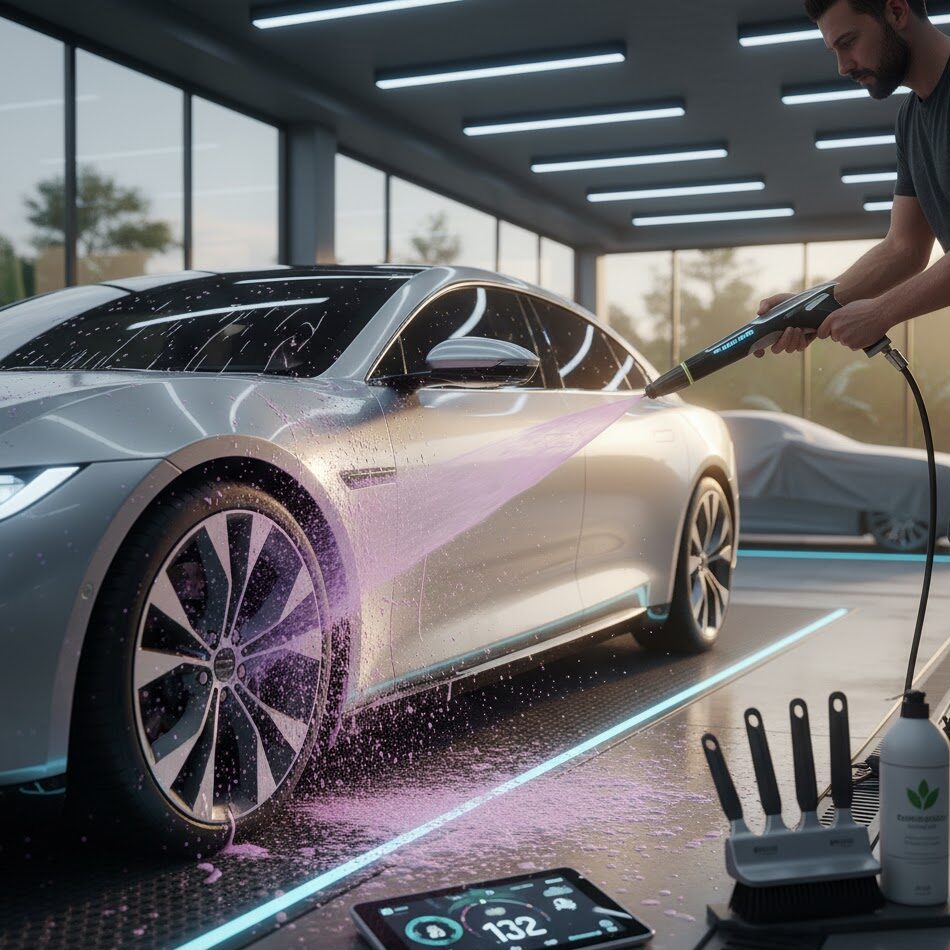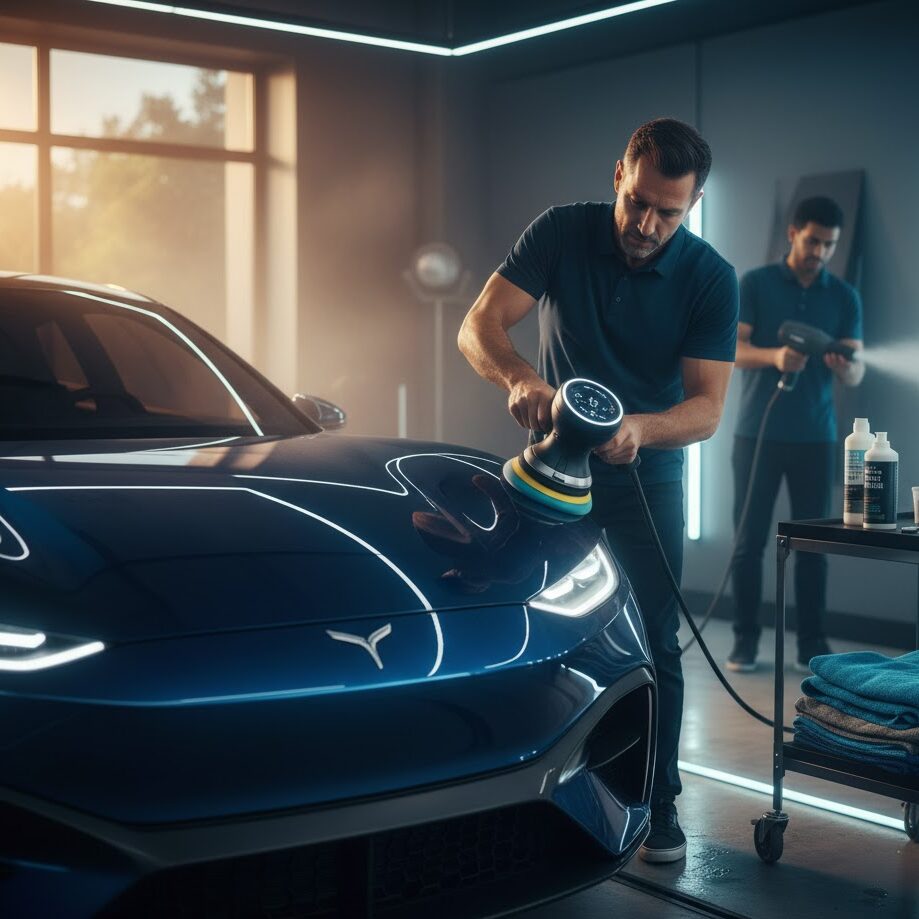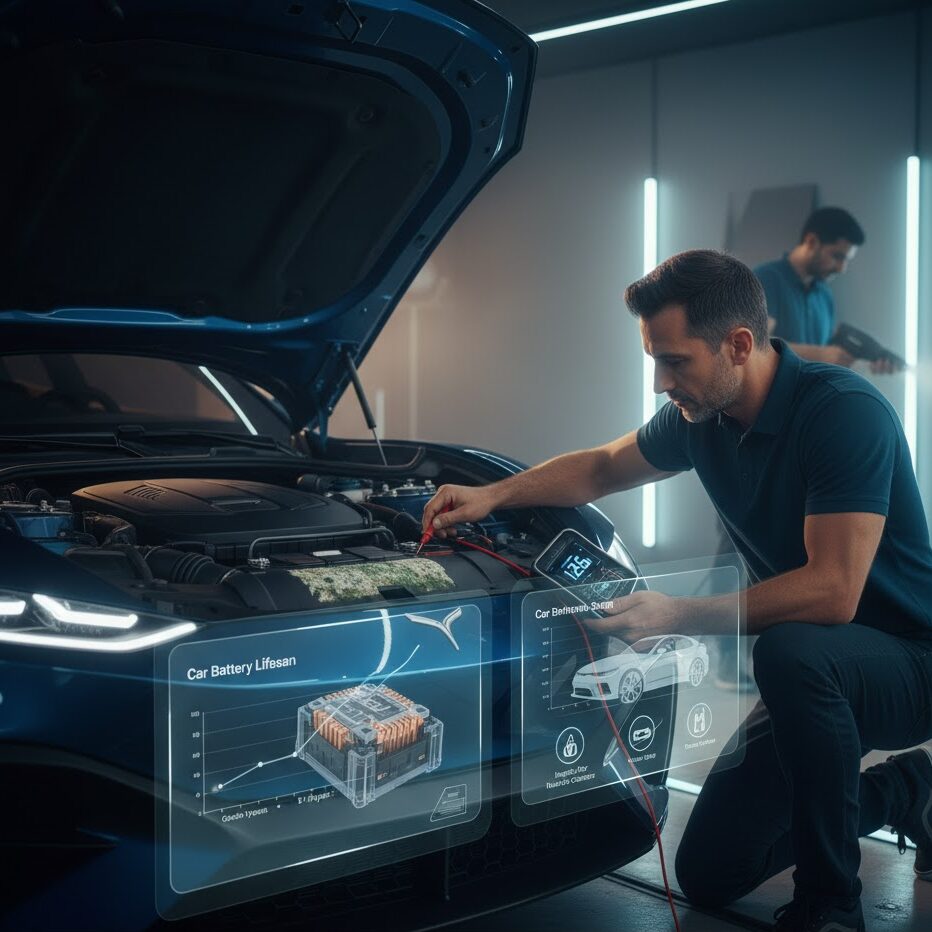As we move deeper into the age of technology, everyday routines are being transformed by smart tools — and car care is no exception. Car wash 2025 trends are redefining how people clean and maintain their vehicles, combining automation, eco-friendly products, and high-tech gadgets for professional-grade results right at home.
From pressure washers with built-in sensors to AI-guided dryers, the modern car wash experience has become cleaner, faster, and more efficient. Whether you’re passionate about vehicles or just want to save money on professional detailing, these innovations make it easier than ever to perform a self car wash at home.
This guide will walk you through how smart tools, eco-technologies, and simple techniques like the two-bucket car wash method come together to deliver a perfect shine — while also touching on related car-care essentials like wheel and tire cleaning and car battery maintenance.
1. The Future of Car Cleaning: Car Wash 2025
In car wash 2025, convenience meets innovation. Modern car owners now have access to smart pressure washers that automatically adjust water flow, robotic car dryers that prevent streaks, and biodegradable cleaning agents that protect both paint and the planet.
New AI-powered car wash tools can detect dirt density and surface sensitivity, adjusting their pressure to avoid scratches. Some advanced home car wash systems even connect to mobile apps, allowing users to track water usage, drying time, and cleaning patterns.
Compared to traditional methods, the technology-driven DIY car wash guide of today emphasizes efficiency and environmental responsibility. Less water, smarter sensors, and better materials all contribute to a superior clean that extends your car’s lifespan and gloss.

2. The Rise of the Self Car Wash at Home
Gone are the days when washing your car in the driveway meant a bucket and an old rag. The self car wash at home trend has surged thanks to accessible smart tools. In 2025, electric foam cannons, wireless vacuums, and portable dryers make it possible to achieve professional results without ever visiting a car wash center.
Home washing isn’t just about saving money — it’s about control. You choose gentle, paint-safe products and determine how much water or soap to use. Smart tools like adjustable hose nozzles and touchless drying wands have turned the process into both a hobby and a satisfying weekend ritual.
By pairing these tools with techniques like the two-bucket car wash method, you ensure that your vehicle is spotless without causing micro-scratches or swirls.

3. Mastering the Two-Bucket Car Wash Method
While technology has changed the way we clean cars, some traditional techniques still play an essential role — and the two-bucket car wash method is one of them. It remains the most effective way to minimize scratching and preserve your paint’s finish.
Here’s how to do it properly:
- Bucket 1: Fill with clean water for rinsing your mitt or sponge.
- Bucket 2: Fill with a mix of water and pH-balanced car wash soap.
- Dip and Rinse: Wash one section of the car, rinse your mitt in the clean water bucket, then dip it back into the soapy bucket before continuing.
This simple yet smart method prevents dirt particles from re-entering your wash mitt, keeping your paint surface safe and smooth. Even with advanced cleaning tools, this manual approach remains a cornerstone of every modern DIY car wash guide.

4. Smart Tools Redefining Wheel and Tire Cleaning
When it comes to complete car detailing, wheel and tire cleaning is one of the most overlooked steps — but it’s also one of the most important. Wheels collect brake dust, grime, and road debris, which can corrode metal surfaces over time.
In 2025, new smart brushes and pressure-controlled sprayers have made cleaning wheels safer and more effective. These devices feature adjustable heads and digital pressure sensors that protect delicate finishes while removing stubborn dirt. Some even include LED lighting for nighttime cleaning or built-in soap dispensers for efficient scrubbing.
For best results, use a dedicated wheel cleaner and brush set, then rinse thoroughly with your smart pressure washer. This step enhances your vehicle’s appearance and improves overall longevity by preventing buildup that could damage components.

5. The Role of Smart Drying and Detailing Tools
Drying is often where people accidentally ruin a perfect wash. Air-drying leaves behind water spots, while rough towels can scratch the paint. In car wash 2025, smart dryers are changing the game.
Cordless car dryers now use ionized air technology to remove water droplets safely, reducing the risk of streaks. Some even include temperature sensors that automatically adjust airflow to protect sensitive paint.
For detailing, microfiber towels infused with static-resistant fibers ensure lint-free results. Combined with modern wax applicators and smart polishers, these innovations make it easy to give your car a glossy, showroom finish without effort.

6. Integrating Car Battery Maintenance into Your Routine
Car care isn’t just about the exterior shine — it’s also about performance. While washing your car, take the opportunity to check under the hood. Car battery maintenance plays a vital role in keeping your vehicle reliable.
Start by inspecting the terminals for corrosion, cleaning them if necessary, and checking voltage using a smart multimeter. This ensures your car’s electrical systems run smoothly, especially if you use electric vacuums or dryers during your wash routine.
Drivers often ask, how long do car batteries last? For gasoline cars, the average lifespan is about 3–5 years. However, for hybrid or electric vehicles, many also wonder how long a battery car last — typically between 8 and 15 years, depending on driving conditions, charging habits, and manufacturer quality.
By including battery checks in your wash routine, you combine aesthetics with functionality, ensuring your car looks great and performs efficiently.

7. Eco-Friendly Car Wash Practices for 2025
Another exciting development in car wash 2025 is the shift toward sustainability. Many smart tools now use up to 50% less water and rely on biodegradable soaps that don’t harm ecosystems. Portable, waterless wash systems and microfiber technologies reduce waste while delivering the same spotless shine.
Solar-powered pressure washers and rechargeable dryers are also becoming popular, making it easier for people to maintain a self car wash at home without increasing their environmental footprint.
These advancements show how innovation and responsibility can go hand in hand, giving car owners the satisfaction of clean vehicles and a cleaner planet.

8. Combining Old Techniques with New Technology
What makes modern car care unique is how traditional methods blend with cutting-edge tools. While we rely on sensors and automation today, core practices like hand washing, careful drying, and thorough inspection still matter.
The DIY car wash guide of the future encourages balance — letting smart machines handle repetitive work while allowing you to focus on detail and precision. Even simple touches like manually cleaning door edges or applying protective wax make a difference that machines can’t replicate.
In other words, technology amplifies human skill — it doesn’t replace it.

Conclusion
The evolution of car wash 2025 showcases how innovation and passion can coexist. From the rise of the self car wash at home movement to timeless techniques like the two-bucket car wash method and advanced wheel and tire cleaning tools, maintaining your car has never been easier or more rewarding.
But car care isn’t just about appearance — it’s also about reliability. Understanding how long do car batteries last, how long a battery car last, and following consistent car battery maintenance ensures your vehicle stays as strong as it looks.
At nexgenwheels, we believe modern car care is about merging smart tools with smart habits. By embracing innovation while respecting classic detailing methods, every car enthusiast can achieve a perfect balance of style, performance, and sustainability in 2025 and beyond.
I also covered this topic last year—don’t miss my detailed roundup of the 5 Essential Automotive Cleaning Products for a Complete Kit
FAQs – Car Wash with Smart Tools in 2025
- What are smart car wash tools, and how do they work?
Smart car wash tools use sensors, automation, and AI to optimize cleaning. For example, pressure washers may auto-adjust based on surface type, while smart dryers can detect water presence and adjust airflow to avoid streaking or damage. - Is it safe to wash my car at home using smart tools?
Yes, smart tools are designed to be user-friendly and safe for home use. They often feature adjustable settings for pressure, temperature, and flow, reducing the risk of scratches or water damage compared to traditional methods. - What is the two-bucket car wash method, and why is it still recommended in 2025?
The two-bucket method uses one bucket for clean water and another for soapy water to prevent dirt from re-contaminating your wash mitt. Even with advanced tools, it’s still one of the best techniques to protect your paint from scratches. - Can I really get professional-quality results from a self car wash at home?
Absolutely. With smart tools like electric foam cannons, cordless dryers, and premium microfiber towels, home car washes can rival or even exceed professional results — especially when combined with proper techniques. - How do I maintain my car battery as part of my car wash routine?
During your wash, inspect the battery for corrosion, clean the terminals, and check voltage with a smart multimeter. Regular checks can help prevent breakdowns and extend battery life. - How long do car batteries last in gasoline, hybrid, and electric vehicles?
- Gasoline car batteries: 3–5 years
- Hybrid batteries: 8–10 years
- Electric vehicle batteries: 10–15 years
Lifespan depends on driving habits, climate, and charging patterns.
- Gasoline car batteries: 3–5 years
- Are eco-friendly car wash tools really effective?
Yes. Many modern tools reduce water usage by up to 50% and use biodegradable soaps. Some models are even solar-powered, proving that sustainability and performance can go hand in hand.

